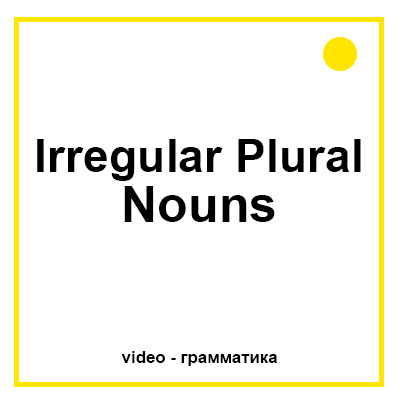2. Значение To Be
2.1. To be для Локации
2.2. To be для Описания
2.3. To be для Погоды
4. Where — A1/A2
5. When — A1/A2
6. How tall / How high / How far / How long
7. Relative Pronouns — Who Which That
8. Relative Pronoun — Whose
9. Identifying/Non-identifying Clauses
10. Как говорить время на английском языке — A1
11. Как говорить время на английском языке — A2
12. Как говорить цифры на английском языка
13. Rules for Plural Nouns
14. Irregular Plural Nouns
15. Much Many A lot of Lots Of
16. Little Few
17. A little A Few
19. Have Has
20. There is/There are Pre A1
21. There is/There are A1
22. Разница между There is и It is
24. Как формировать простой инфинитив (Pre A1 Level)
25. Как перевести слово «чтобы». Часть №1
26. Как перевести слова «чтобы» и «что». Часть №2
27. Как используется слово What в вопросах
28. Как используется слово What в утвердительных предложениях
29. Как переводится предлог With
30. Как использовать предлог From
31. Как использовать предлог For
32. Родительный и творительный падежи
33. It-Sentences Part 1
34. It-Sentences Part 2
35. It-Sentences Part 3
36. Почему существуют артикли
37. Когда употребляются артикли — A1
38. Дополнительные значения A(An)/The — A2/B1
39. Когда не употребляются артикли
40. Some Any No
41. Something, Someone, Somebody, Somewhere
42. Порядок слов в английском языке
43. Present Simple A1
44. Present Simple A2
45. Present Simple B1
46. Разница to be — do/does в вопросах и отрицаниях
47. Present Continuous Pre A1
48. Present Continuous A1-A2
49. Present Continuous B1-С1
50. Разница между Present Simple и Present Continuous в Утверждениях
51. Разница между Present Simple и Present Continuous в Отрицаниях
52. Разница между Present Simple и Present Continuous в Вопросах
50. State and Dynamic Verbs
51. State Verbs in the Continuous Tense
52. Modal Verb Can
53. Modal Verb Could
54. Modal Verb Can/Could (B1)
55. Modal Verb Must (A1)
56. Modal Verb Must (A2)
57. Modal Verbs Must (B1)
58. Modal Verb Have to (Has to)
59. Modal Verb Had to
60. Have To or Must Difference
61. Don’t Have To or Mustn’t Difference
62. Modal Verb Should (A1/A2)
63. Modal Verb Should (B1)
64. Modal Verb May/Might (A1/A2)
65. Modal Verb May/Might (B1)
66. Modal Verbs Be Able To
67. Need как смысловой глагол
68. Modal Verbs + Perfect Infinitive
69. Modal Verbs with Simple Passive Voice
70. Would like
71. Possessive case
72. Object pronouns (him, her, them, etc.)
73. Possessive Adjectives (his, her, their, etc.)
74. Как запомнить английские местоимения
75. THEM / THEIR / THERE / THEY’RE — в чём разница?
75. Who — Вопрос к подлежащему
76. Preposition of Time At, On, In
77.1. Preposition of Time — At
77.2. Preposition of Time — In
77.3. Preposition of Time — On
77.4. Когда не ставим предлоги времени
78. Prepositions of Place for Beginners
79. Prepositions of Place At
80. Prepositions of Place In
81. Prepositions of Place On
82. Когда использовать предлоги To, At, In или не использовать предлог вообще
83. Arrive At / Arrive In / Get To
84. Prepositions of Movement
85. Разница между To и For
86. To be in a hurry / To be late / To be afraid (scared) / To be interested in
87. To be tired / To be asleep / To be well / To be married
88. To be open / To be closed / To be hot / To be hot/ To be warm
89. Be fed up with / Be angry with / Be full of / Married to / Be nice of / Be kind to
90. Be good at / Be interested in / Be different to / Be scared of / Be afraid of
91. Be sorry about / Be sorry for / Be sorry to / Feel sorry for
92. Ask for / Wait for / Thank for / Think of/about
93. Talk to / Speak to / Listen to / Belong to / Happen to
94. To phone / To email / To text
95. Look at / Look for / Look after / Depend on
96. The Imperative
97. Adverbs
98. Irregular Adverbs
99. Verbs of Sense and Adjectives
100. Comparative and Superlative Adjectives
101. Comparative and Superlative Adverbs
102. Irregular Comparative and Superlative Adverbs and Adjectives
103. Order of Adverbs — A2
104. Order of Adverbs — B1/B2
105. Adverbs of Frequency A1
106. Adverbs of Frequency A2/B1
107. Неправильные глаголы
108. Was Were
109. There was, There were
110. Had
111. Past Simple
112. Past Continuous
113. Разница между Past Simple/Past Continuous
113. Present Perfect
114. Present Perfect Continuous
115. Past Perfect
116. Past Perfect Continuous
117. Разница между Present Perfect и Past Perfect
118. Future Perfect Simple
119. Future Perfect Continuous
120. Future Simple — A1
121. Future Simple — A2
122. To be in Present Simple, Past Simple, Future Simple
123. Be Going To — A1
124. Be Going To — A2
125. Разница между Future Simple и Be Going To — A1
125. Be Going To for Evidence
126. Present Continuous for Future
127. Present Continuous or Be going to
127. Simple Passive Voice
128. Continuous Passive Voice
129. Perfect Passive Voice
130. Past Perfect Passive Voice
131. Как перевести активный залог в пассивный залог
132. Какие глаголы не возможно перевести в пассивный залог
133. Questions in Passive Voice
134. Passive Voice with Who What
135. Passive Voice with To Be Going To
136. Простой инфинитив
137. Употребление наречия too
138. Употребление наречия enough
139. The «ing-form» Level A1
140. The «ing-form» Level A2/B1
141. Порядковые числительные
142. Как говорить время на английском
143. Used to
144. To be used to
145. To get used to
146. Would
149. Difference Used to / Would
150. Difference Used to / Be Used to
151. Difference Used to / Be Used to / Get Used to
147. Type 0 Conditionals
148. Type 1 Conditionals
149. Type 2 Conditionals
150. Type 3 Conditionals
151. Present Perfect №1
152. Present Perfect №2
153. Present Perfect №3
154. Present Perfect №4
155. Present Perfect №5
156. Разница между Present Perfect и Past Simple №1
157. Разница между Present Perfect и Past Simple №2
158. Взаимодействие Present Perfect и Past Simple
159. I wish, If only
160. Разница Speak, Say, Tell, Talk
161. Разница Study, Learn, Teach
162. Разница See, Watch, Look
163. Разница Go, Come, Leave, Get
164. Reported Speech Tell — Say
165. Reported Speech Out-of-date — Grammar Tenses
166. Reported Speech Out-of-date — Expressions of Time
167. Reported Speech Out-of-date — Expressions of Place
168. Reported Speech General Truth
169. Reported Speech Up-to-dated
170. Какие грамматические времена и модальные глаголы не меняются в косвенной речи
171. Reported Questions
172. Reported Commands/Suggestions/Requests
173. Introductory Verbs
174. Modal Verbs in Reported Speech
Уроки английского языка проводятся онлайн.
Все учебники и материалы предоставляются преподавателем.
Ответы на возможные вопросы по процессу обучения онлайн можно прочитать по ССЫЛКE
© Все статьи в группах и тематических разделах, представленные на этом ресурсе являются оригинальными текстами. Автор Валяева Анастасия Валерьевна. Распространять и использовать можно только с разрешения автора.

